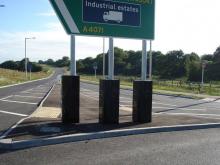New plans by the European Commission are being proposed in a bid to reduce accident levels on the road. The changes are being made in a bid to reduce accident levels caused by defective vehicles. Under the new rules, all motorcycles and scooters would require technical inspections at regular intervals.
RSSNew plans by the 2465 European Commission are being proposed in a bid to reduce accident levels on the road. The changes are being made in a bid to reduce accident levels caused by defective vehicles. Under the new rules, all motorcycles and scooters would require technical inspections at regular intervals.
The move comes as the number of road deaths spiked in recent months. Commission vice president Siim Kallas revealed the proposed measures following worrying increases in highway fatalities after a decline of close to 50% over a decade. According to the EC, each day technical failures are responsible for five deaths on Europe’s roads. Such failures account for 8% of motorcycle accidents and 6% of car accidents. Official EC figures suggest technical problems are the cause of 2,000 deaths/year across the 27 nations. Statistics reveal that up to 10% of cars have a defect which may lead them to fail tests. The EC believes that the new vehicle testing proposals could save more than 1,200 lives/year and prevent a further 36,000 accidents linked to technical failure. Testing for scooters and motorbikes would become compulsory across the EU under the new legislation, as powered two wheelers are the highest risk group among road users.
If approved, the directive would require the nine countries that do not currently carry out inspections of motorcycles and scooters to do so. Old vehicles or those that have covered large distances would be required to undergo a first test after four years followed by tests every two years.. Statistics suggest that the likelihood of technical failure increases dramatically after five years. Cars and light commercial vehicles of up to 3.5tonnes that have travelled over 160,000km after four years would then have to undergo yearly inspections. The Commission also proposed EU-wide minimum standards for vehicle inspection and a clamping down on fraud relating to distance travelled.
The proposals have come under attack however with criticisms that such changes will not reduce accident levels. The Federation of European Motorcyclists Associations denounced the proposals as unfairly targeting two-wheeled vehicles, and said the existing EU directive on roadworthiness of cars, trucks, taxis and other vehicles is adequate.
The association said the new proposals would cost two-wheeled vehicle owners some €1.2 billion/year in additional operating costs. “This is nothing less than a tax on poverty for those who cannot afford a new vehicle every three years," Aline Delhaye,2906 Fema’s general secretary, said in a statement. "In terms of time and money, the cost for citizens is going to be astronomical, with no benefits in return. This is not acceptable.”
Kallas, who is in charge of transport, claimed the directive was aimed at removing unsafe vehicles from highways. “If you’re driving a car which is not fit to be on the road, you’re a danger to yourself and to everyone else in your car … What’s more you’re a danger to all the other road users around you”, adding “We don’t want these potentially lethal cars on the road.”
The EU recorded 30,900 roadway fatalities - including pedestrians - in 2011. In 2009, the latest figures available, motorcyclists accounted for 16% of fatalities, 20% were pedestrians, and 47% were in cars.
The available data shows that there is cause for concern. Road deaths in Sweden were up 18% over the last year and close to 10% in Germany and up 6% in the UK, all three being countries with comparatively good road safety standards. Finland and Poland saw road deaths rise 7%. Some countries recorded worrying figures, with a 29% increase in road fatalities in Estonia and 13% in Luxembourg. However, they are small countries and over the past 10 years, the numbers for Estonia and Luxembourg dropped well over 50%.
The EU has been effective in reducing road death levels since it first introduced policies across the member countries to tackle the problem in 2001. But progress has slowed and road death rate reduction showed only a 2% change in 2011 compared with 2010. The reasons reversal in high fatalities are unclear but difficult weather conditions have been suggested as a possible cause.
However, some effective safety measures that could save lives are not being enacted across Europe and it is not immediately clear why this is the case. In Spain changes to legislation required all roadside barriers to be safe for motorcyclists, resulting in a dramatic drop in the numbers of motorcyclists being killed or injured following impacts against barrier posts. Amendments have been tabled that would require similar legislation to be introduced right across Europe, based on the strong statistical data proving the safety benefits in Spain. But for some reason that is not immediately apparent, this proposal has been blocked by groups from various nations, a fact that FEMA has consistently pointed out as resulting in unnecessary deaths and crippling injuries to Europe’s powered two wheeler riders. The technology is available to reduce such deaths and there is a wealth of data showing that it is effective, but it is being held back from widespread introduction.
At the same time, the EC has been attempting to force through type approval legislation that would restrict powered two wheeler owners from making any modifications to their vehicles, as well as requiring all new powered two wheelers to feature costly ABS systems. The EC’s claim has been that the type approval legislation would improve safety, despite the complete lack of any data indicating that this would be the case. There is also little data available to show that requiring ABS would have anything but a minimal benefit on the safety of powered two wheelers.
At the same time, data shows some 65% of powered two wheeler accidents are not the fault of the rider and that the biggest single cause of accidents is from other road users not looking properly. But in spite of this, the EC has no plans to introduce compulsory sensor technology that would protect vulnerable road users such as motorcyclists (and cyclists) from being injured in accidents caused by the inattention and/or poor driving of others.
The move comes as the number of road deaths spiked in recent months. Commission vice president Siim Kallas revealed the proposed measures following worrying increases in highway fatalities after a decline of close to 50% over a decade. According to the EC, each day technical failures are responsible for five deaths on Europe’s roads. Such failures account for 8% of motorcycle accidents and 6% of car accidents. Official EC figures suggest technical problems are the cause of 2,000 deaths/year across the 27 nations. Statistics reveal that up to 10% of cars have a defect which may lead them to fail tests. The EC believes that the new vehicle testing proposals could save more than 1,200 lives/year and prevent a further 36,000 accidents linked to technical failure. Testing for scooters and motorbikes would become compulsory across the EU under the new legislation, as powered two wheelers are the highest risk group among road users.
If approved, the directive would require the nine countries that do not currently carry out inspections of motorcycles and scooters to do so. Old vehicles or those that have covered large distances would be required to undergo a first test after four years followed by tests every two years.. Statistics suggest that the likelihood of technical failure increases dramatically after five years. Cars and light commercial vehicles of up to 3.5tonnes that have travelled over 160,000km after four years would then have to undergo yearly inspections. The Commission also proposed EU-wide minimum standards for vehicle inspection and a clamping down on fraud relating to distance travelled.
The proposals have come under attack however with criticisms that such changes will not reduce accident levels. The Federation of European Motorcyclists Associations denounced the proposals as unfairly targeting two-wheeled vehicles, and said the existing EU directive on roadworthiness of cars, trucks, taxis and other vehicles is adequate.
The association said the new proposals would cost two-wheeled vehicle owners some €1.2 billion/year in additional operating costs. “This is nothing less than a tax on poverty for those who cannot afford a new vehicle every three years," Aline Delhaye,
Kallas, who is in charge of transport, claimed the directive was aimed at removing unsafe vehicles from highways. “If you’re driving a car which is not fit to be on the road, you’re a danger to yourself and to everyone else in your car … What’s more you’re a danger to all the other road users around you”, adding “We don’t want these potentially lethal cars on the road.”
The EU recorded 30,900 roadway fatalities - including pedestrians - in 2011. In 2009, the latest figures available, motorcyclists accounted for 16% of fatalities, 20% were pedestrians, and 47% were in cars.
The available data shows that there is cause for concern. Road deaths in Sweden were up 18% over the last year and close to 10% in Germany and up 6% in the UK, all three being countries with comparatively good road safety standards. Finland and Poland saw road deaths rise 7%. Some countries recorded worrying figures, with a 29% increase in road fatalities in Estonia and 13% in Luxembourg. However, they are small countries and over the past 10 years, the numbers for Estonia and Luxembourg dropped well over 50%.
The EU has been effective in reducing road death levels since it first introduced policies across the member countries to tackle the problem in 2001. But progress has slowed and road death rate reduction showed only a 2% change in 2011 compared with 2010. The reasons reversal in high fatalities are unclear but difficult weather conditions have been suggested as a possible cause.
However, some effective safety measures that could save lives are not being enacted across Europe and it is not immediately clear why this is the case. In Spain changes to legislation required all roadside barriers to be safe for motorcyclists, resulting in a dramatic drop in the numbers of motorcyclists being killed or injured following impacts against barrier posts. Amendments have been tabled that would require similar legislation to be introduced right across Europe, based on the strong statistical data proving the safety benefits in Spain. But for some reason that is not immediately apparent, this proposal has been blocked by groups from various nations, a fact that FEMA has consistently pointed out as resulting in unnecessary deaths and crippling injuries to Europe’s powered two wheeler riders. The technology is available to reduce such deaths and there is a wealth of data showing that it is effective, but it is being held back from widespread introduction.
At the same time, the EC has been attempting to force through type approval legislation that would restrict powered two wheeler owners from making any modifications to their vehicles, as well as requiring all new powered two wheelers to feature costly ABS systems. The EC’s claim has been that the type approval legislation would improve safety, despite the complete lack of any data indicating that this would be the case. There is also little data available to show that requiring ABS would have anything but a minimal benefit on the safety of powered two wheelers.
At the same time, data shows some 65% of powered two wheeler accidents are not the fault of the rider and that the biggest single cause of accidents is from other road users not looking properly. But in spite of this, the EC has no plans to introduce compulsory sensor technology that would protect vulnerable road users such as motorcyclists (and cyclists) from being injured in accidents caused by the inattention and/or poor driving of others.









